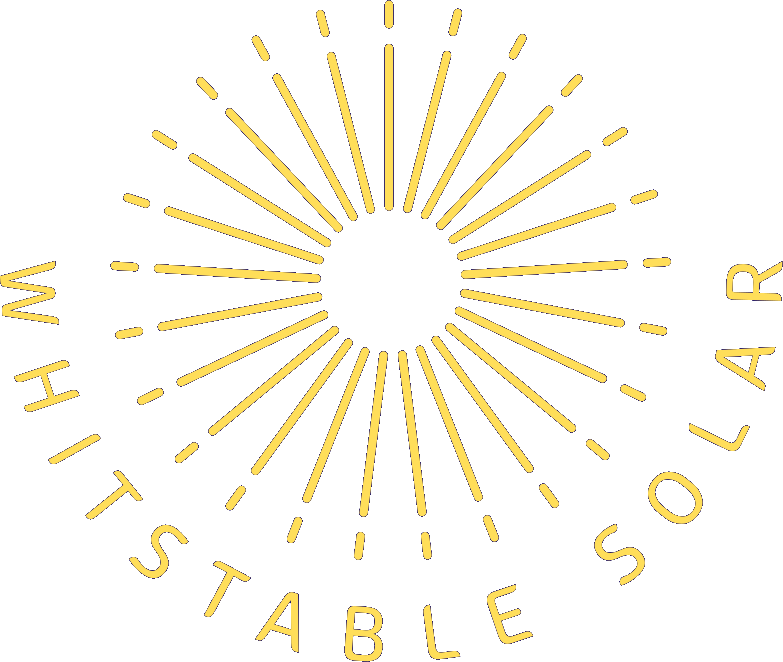
About Solar
Solar PV Cells turn sunlight into DC electricity. They vary in size, composition and power output.
The electricity produced by a Solar PV panel, is measured by the number of Watts (w) produced after being exposed to 1 PSH (Peak Solar Hours).
So, a 430w panel would produce 430 watts after receiving 1 peak hour of sun.
Although PV cells start producing electricity as soon as the sun rises, to work out how much power will be produced by your system, we will only calculate the number of PSH in a day.
Here in the UK we receive more PSH in the summer months than the winter months (https://www.statista.com/statistics/322602/monthly-average-daily-sun-hours-in-the-united-kingdom-uk/). So, a Solar PV system will generate more electricity in summer than winter.
On a pitched roof in the UK, a Solar Panel can produce twice as much power when facing South instead of facing North.
(See: https://www.nea.org.uk/wp-content/uploads/2020/11/Picture3.jpg).
So, if 10 panels could produce 4.3 kw every PSH when facing South, it may only produce 2.15 kw per PSH when facing North.
As well as the direction of the PV Panel, the angle of tilt will also affects the amount of energy they produce.
(see: https://www.nea.org.uk/wp-content/uploads/2020/11/Picture3.jpg).
Shading on only part of your Solar Array can significantly reduce the overall power produced, reducing the efficiency of PV panels that are not shaded.
Optimisers can reduce the amount of power lost from shading or damaged PV cells.
Smart monitors let you know that your system is working efficiently, and alerts attention to loss of power from cells.
Inverters can change the DC power from Solar Panels or battery to AC power for home use. The output is measured in Watts and regulates the flow of energy.
Inverters can regulate power to store in a battery for use later.
We install GivEnergy inverters, that have emergency power supply (EPS): so, if the grid goes down or there’s a power cut you can use your battery to power essential circuits (https://givenergy.co.uk/resources/connect-eps-guide-2023-uk/?asp_highlight=eps&p_asid=4).
Inverters can safely export your excess generated electricity to the grid to sell.
The choosing the an appropriate variable tariff and battery allows you to charge your battery at a low rate, to then use or export its energy when prices are higher (https://octopus.energy/smart/outgoing/)
Smart meters monitor the power you generate, use, sell and buy. A reliable meter is essential, so you know how much energy you have exported and imported.
Batteries allow you to store energy to use when you need it, this may be:
(1) at night, when your PV receives no sun,
(2) if you are paying higher prices at peak times on a variable tariff, or
(3) if you have an EPS facility, to have an Emergency Power Supply when you need it.
Excess energy can be sold by exporting it to the grid, not all prices are the same; so, make sure you get a good price. Using GivEnergy equipment allows access to favourable tariffs. Avoid selling your excess energy for a lower price than what you buy it for, check out Intelligent Octopus Flux (https://octopus.energy/smart/intelligent-octopus-flux/).
If you receive FIT payments, you can change your export tariff to a better deal, whilst still keeping your FIT Generation payment (https://energysavingtrust.org.uk/grants-and-loans/feed-in-tariff/).
Off grid systems provide enough energy for the user to be energy independent with no need to buy energy. However, you need a PV array large enough for your energy needs, and also a suitable battery for supply when the PV is not generating electricity.
In the UK we need to consider the lower PSH of winter, as it is significantly lower than in summer the (https://www.statista.com/statistics/322602/monthly-average-daily-sun-hours-in-the-united-kingdom-uk/) and energy usage may also be higher. So, an average household using 7.4kwh of electricity a day (https://www.ofgem.gov.uk/information-consumers/energy-advice-households/average-gas-and-electricity-use-explained), with with a 5kw system, may need more than 12 x 430w panels to be off grid, as the direction, angle, PSH and efficiency will all need to be considered, for actual generated energy.
An Off grid system may not be achievable or suitable for everyone, but smart tariffs that allow you to buy back your excess Summer energy at the same price in Winter, could be the next best thing (https://octopus.energy/smart/intelligent-octopus-flux/).
A solar survey, will help determine the most appropriate solution for you.



